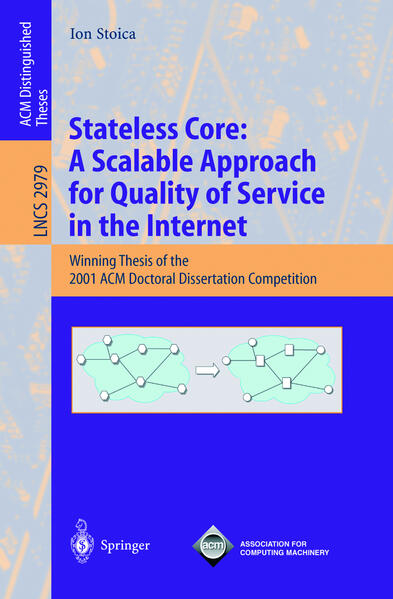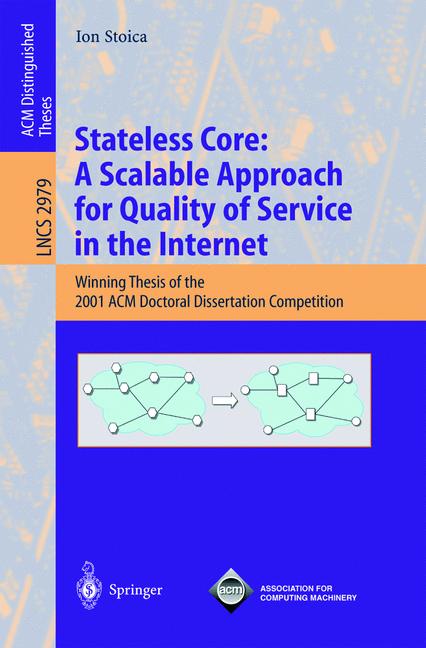
Zustellung: Mi, 16.07. - Fr, 18.07.
Versand in 2 Tagen
VersandkostenfreiThe fundamental aspect of the Internet architecture that distinguishes it from other network technologies (such as X. 25 and ATM) is that it is c- nectionless (vs. connection-oriented) and stateless (vs. stateful). The heated debateofwhetherconnection-orientedorconnectionlessarchitectureisbetter has lasted for several decades. Proponents of the connectionless architecture point out the great robustness and scalability properties of the architecture, as demonstratedby the Internet. Onewell-knownarticulationofthis philo- phy is the End-to-End Arguments . Opponents argue, rightfully, that there is no known solution that can provide quantitative performance assurances or guaranteed QoS in a connectionless network. It has been widely rec- nized that QoS is a must-have feature as the Internet technology evolves to the next stage. However, all existing solutions that provide guaranteed QoS require routers to maintain per ? ow (another name for connection used by the Internet community) state, which is the fundamental element of a connection-oriented architecture. The apparent con? icting goals of having a stateless network and supporting QoS have presented a great dilemma for Internet architects. As an example, Dave Clark, one of the most respected Internet architects and the author of the famous End-to-End Arguments paper, wasalsoakeydesigneroftheInternetIntegratedServicesArchitecture that requires routers to maintain per ? ow state. Dr. Ion Stoica s dissertation addresses this most pressing and di? cult problem facing the Internet community today: how to enhance the Internet to support rich functionalities (such as QoS and tra? c management) while still maintaining the scalability and robustness properties embodied in the original Internet architecture. Inhisdissertation, Dr.
Inhaltsverzeichnis
1 Introduction. - 2 Background. - 3 Overview. - 4 Providing Flow Protection in SCORE. - 5 Providing Guaranteed Services in SCORE. - 6 Providing Relative Service Differentiation in SCORE. - 7 Making SCORE More Robust and Scalable. - 8 Prototype Implementation Description. - 9 Conclusions and Future Work. - A Performance Bounds for CSFQ. - B Performance Bounds for Guaranteed Services.
Produktdetails
Erscheinungsdatum
22. April 2004
Sprache
englisch
Auflage
2004
Seitenanzahl
240
Reihe
Lecture Notes in Computer Science
Autor/Autorin
Ion Stoica
Verlag/Hersteller
Produktart
kartoniert
Abbildungen
XVI, 219 p.
Gewicht
371 g
Größe (L/B/H)
235/155/14 mm
ISBN
9783540219606
Entdecken Sie mehr
Bewertungen
0 Bewertungen
Es wurden noch keine Bewertungen abgegeben. Schreiben Sie die erste Bewertung zu "Stateless Core: A Scalable Approach for Quality of Service in the Internet" und helfen Sie damit anderen bei der Kaufentscheidung.









